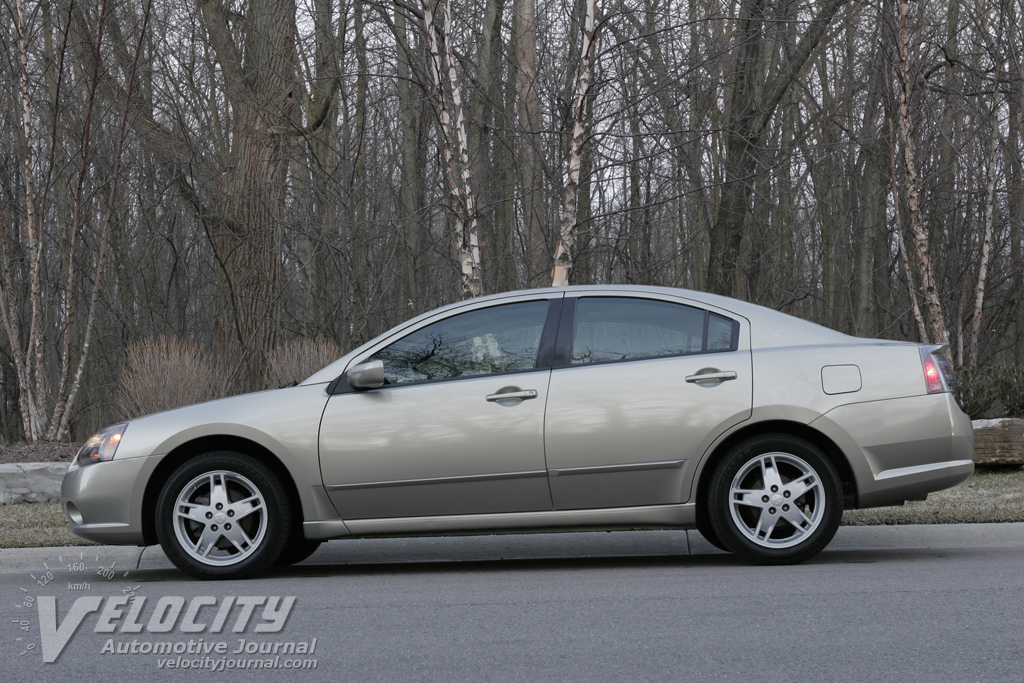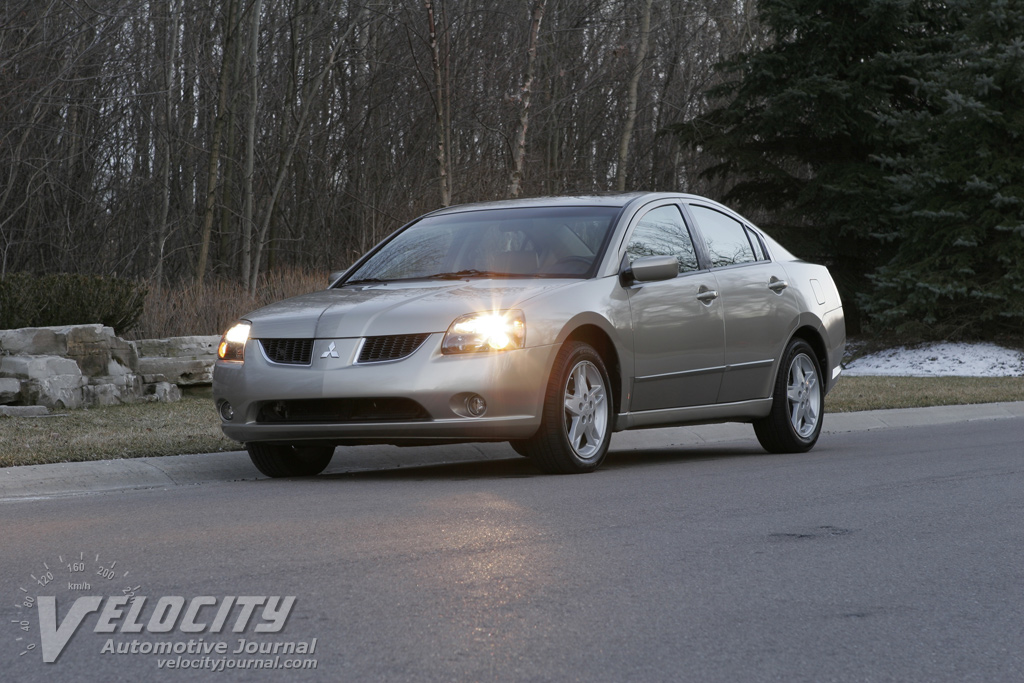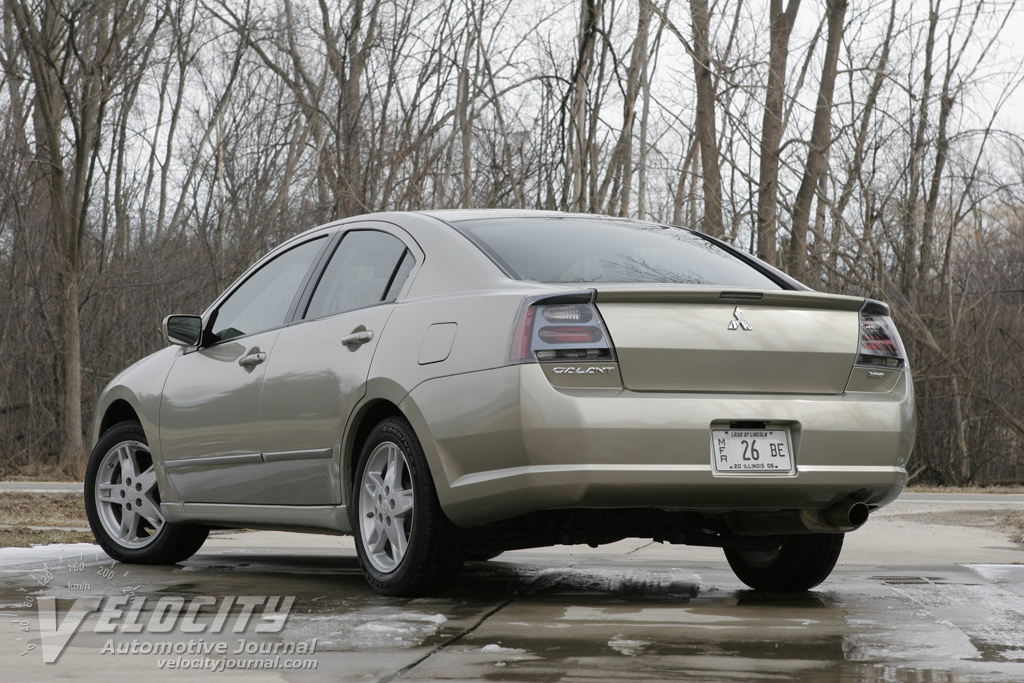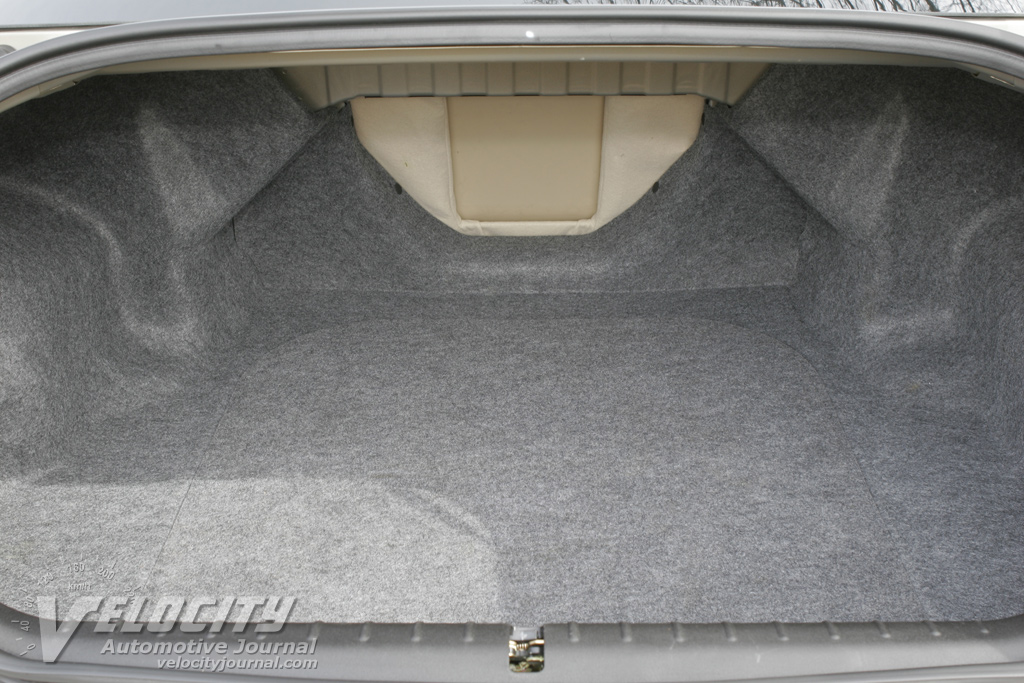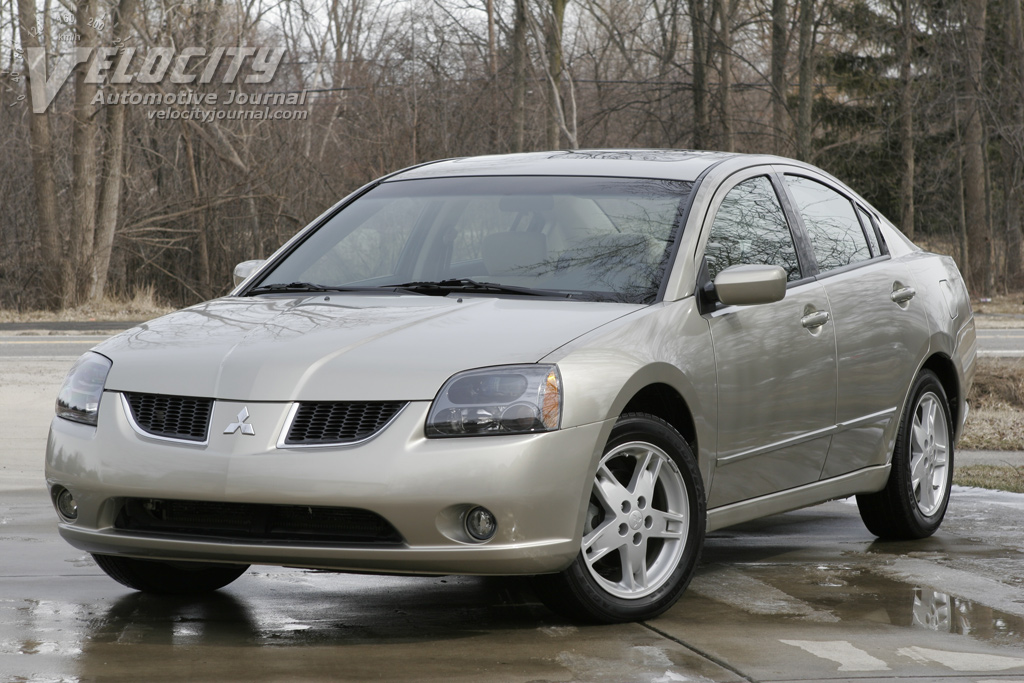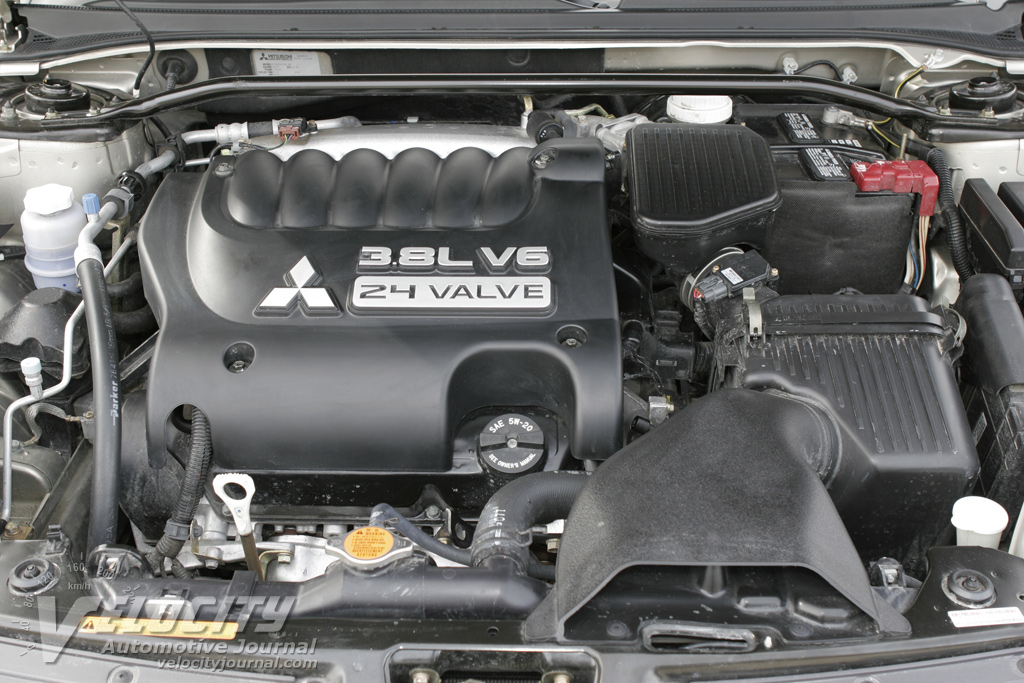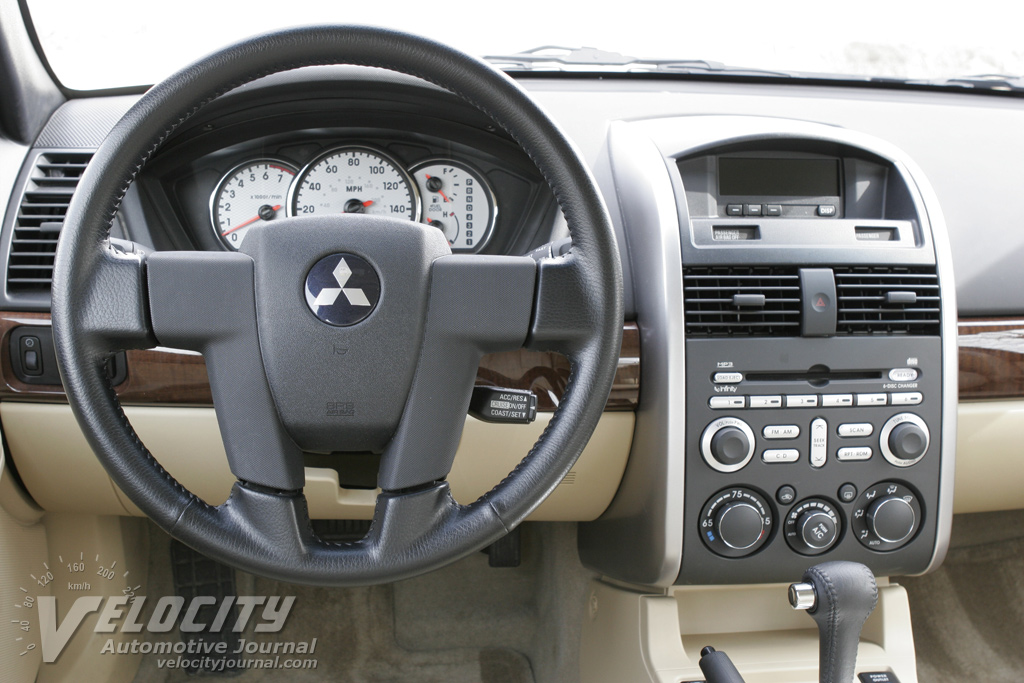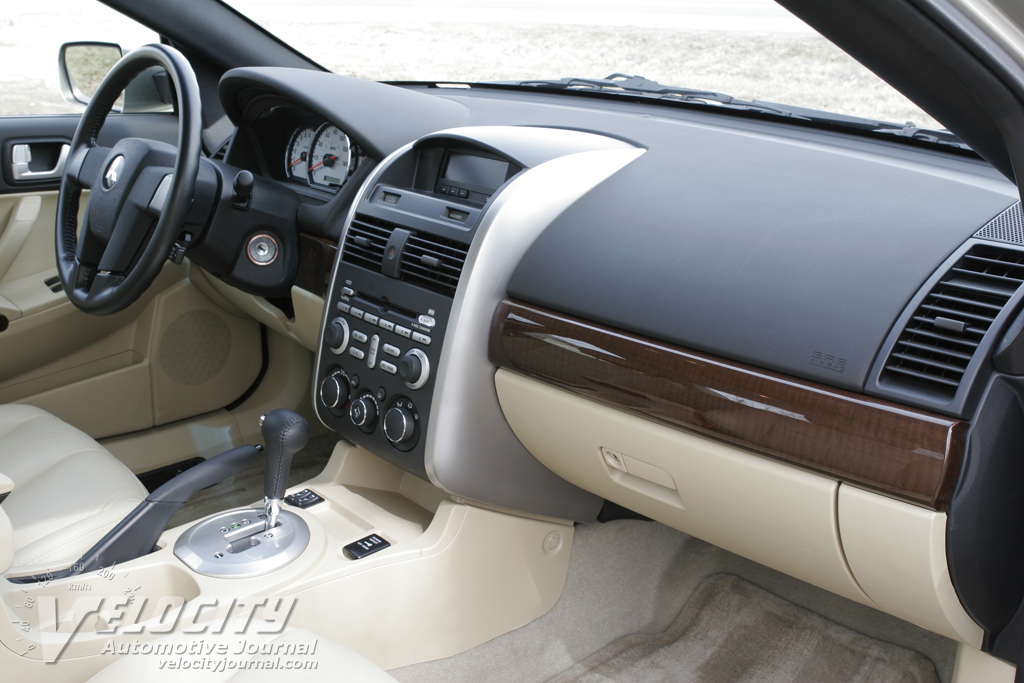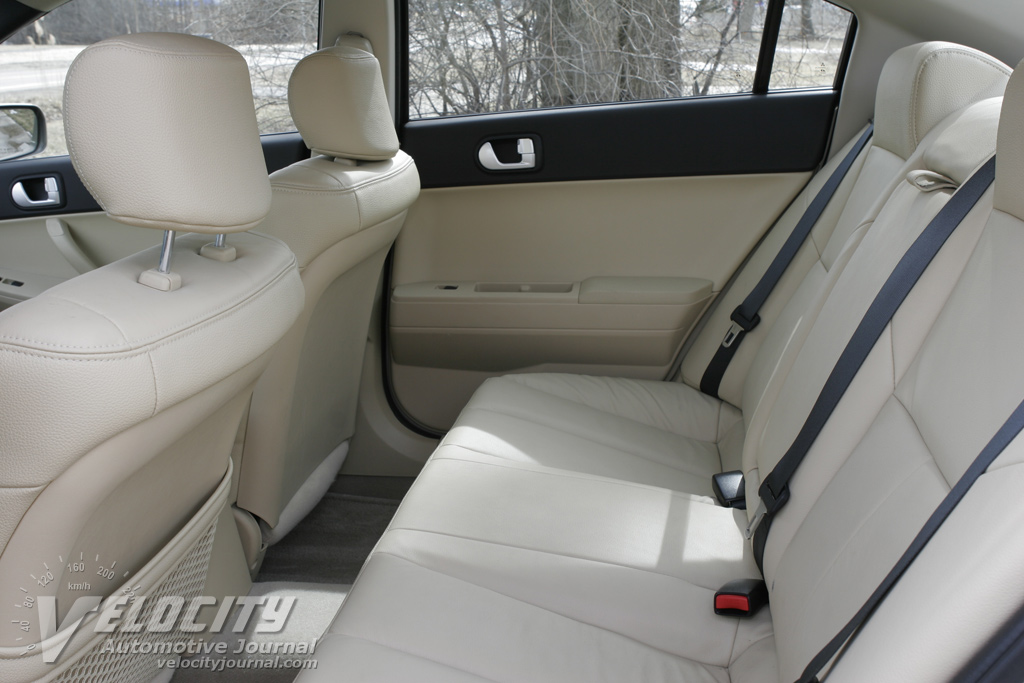2006 Mitsubishi Galant GTS
03/08/2006
Shahed Hussain
Mitsubishi has sold the Galant in the US since the middle of the 1980's, but it remains a marginal player in the midsize sedan segment. Some may remember the hot Galant VR4 AWD sedan from the early 1990's, but successive models have not impressed most prospective customers. Despite Mitsubishi's marketing efforts, the current Galant is still rare, as buyers regularly head for Toyota, Honda, or Nissan dealers for a Japanese family sedan.
Lack of customer appeal meant that Mitsubishi had to bring the Galant closer to mainstream midsize sedan standards. So the current Galant has an interior to seat five adults comfortably, and offers a choice of a 2.4L inline-4 or a 3.8L V-6.
A quick sweep of the exterior reveals that the Galant does not disguise its Japanese origins. The bold front fascia bisects the split upper honeycomb grille. Fog lights flank the lower grille opening. With its unusual oval stacked headlights, the Galant wears a vaguely robotic face. A curved roofline arcs gracefully over the wedge-shaped lower body, until it merges with the tall rear deck. GTS models get a discreet spoiler between the chrome bezel oval taillights. Below the rear bumper fascia exits a single stainless steel exhaust tip. Filling out the wheel wells are 5-spoke alloy wheels, shod with 215/55-R17 all-season Goodyear Eagle RS-A tires. Clean, athletic design and the discreet use of chrome set the Galant GTS apart from most competitors.
Slip inside the Galant, and an unusual combination of textures and colors surrounds the driver. Dark gray rubber-like plastic covers the dashboard and the upper door panels. The black center console and its silver housing contrast with the simulated wood trim. Mitsubishi calls it "Brownwood," but in reflected sunlight, odd shiny flecks expose its artificial origins. Frankly, there is no reason for pseudo-wood in a sports sedan, especially since lesser Galants get titanium-colored trim instead. Choose any other exterior color besides Platinum Pearl, and one can select the black leather interior with "Blackwood" trim instead.
Behind the wheel, the driver faces a white-faced speedometer directly ahead, and an 8,000-rpm tachometer to the left. Fuel, temperature, and the transmission gear indicator are on the right. At night, the instrument display changes to an attractive cool blue. The fat-rimmed steering wheel is an unusual 4-spoke design, with a central Mitsubishi 3-diamond logo. On the easily accessible center stack are large knobs and switches for the climate control and audio systems. All the controls and buttons are in logical locations, so it is easy to acclimate to the Galant.
Standard leather seats are available in black or crème (beige). Flat front seat bolsters, combined with slippery leather means that zipping around in city traffic is less enjoyable than it could be. Although the driver's seat has 8-way power controls, the front passenger must make do with manual levers. At this price level, the GTS should offer an optional power passenger seat. On chilly days, owners will appreciate the standard heated front seats with dual temperature settings.
A consequence of the steep windshield rake and low roofline is limited front headroom for 6-foot tall passengers. These same drivers also may find the A-pillar uncomfortably close to their head. The optional sunroof cuts headroom even further, especially for rear passengers. Rear seats are comfortable, but legroom and headroom are somewhat restricted.
Galant GTS models get a 270-watt Infinity 6-CD audio system that cranks out clear, crisp highs and thumping bass. The Infinity system will also play mp3 audio compact discs, but has no auxiliary input for portable mp3 players. A dash-mounted LCD displays time, radio/CD data, compass directions, and exterior temperature. As it boots up, this display shows a stylized image of the Galant. If one opts for the navigation system, a larger navigation LCD screen replaces this display.
Twist the key and the 3.8L motor fires up with a pleasant bass rumble. This cast-iron SOHC V-6 is the largest displacement engine in a Japanese passenger car. Although 230-bhp is certainly healthy power output for a midsize sedan, most comparable engines from other manufacturers produce more power from less displacement. Nonetheless, with 250 lb.-ft. torque at 4,000 rpm, the 3.8L has excellent midrange throttle response. Although Mitsubishi equips the Galant GTS with standard traction control, it operates unobtrusively under most circumstances. To their credit, the driveline engineers managed to minimize torque steer, even at full throttle, which is quite a feat when one considers the substantial engine torque output.
For 2006, a wide ratio 4-speed Sportronic® transmission is your only option. For manual shift control, slide the lever to the right, past the "D" position, and toggle up and down sequentially. Transmission shifts in manual mode are slow, but smooth. Like other automatics, the Sportronic® will downshift as speed decreases to prevent an engine stall. At redline, it will obediently hold the gear and bounce off the rev limiter without an upshift. Make no mistake; the Sportronic® automatic is no substitute for a good manual, but it adds a measure of extra control that makes the Galant GTS more enjoyable to drive.
Mitsubishi tuned the suspension to deliver a firm controlled ride on rough roads. Over rippled street surfaces, the ride can get a little jiggly, but never becomes harsh or objectionable. Some road and tire noise is noticeable over potholed roads. Cruise at 90-100 mph and the Galant GTS tracks down the highway with stability and precision. The stiff body structure allows the chassis to respond accurately to driver inputs. With just the right amount of steering assist, the Galant GTS carves corners with surprising speed and poise for a midsize sedan. The all-season Goodyear RS-A tires provide accurate communication of road textures through the steering wheel. Understeer is minimal at moderate cornering speeds, although the tires are prone to tread squirm and push as speed rises. With its relatively stiff suspension settings, the Galant stays planted flat around most corners. True performance tires would test the chassis limits more effectively, but at the expense of ride and increased tire noise. This subtle balance of handling and performance takes some time to become apparent, but once is does, one appreciates the Galant's quiet competence.
Many potential customers may ask what distinguishes the Galant GTS from its more popular competitors. The answers are simple: a combination of unique styling, ample V-6 torque, and surprisingly sporty handling. These strengths are countered by an interior marred with odd shapes, textures, and colors. Of course, a lot of that criticism fades if one selects the black leather interior instead of the black/crème option in the tested Galant GTS. The real competition for this Mitsubishi is from the V-6 Accord and Altima. Both rivals offer comparable power, and in the case of the Altima, arguably more attractive styling. Although the Galant GTS is a perfectly acceptable midsize sedan, and offers some unique traits, it is not compelling in any particular way. Unfortunately, in this fiercely competitive segment, any midsize sedan entrant must be outstanding to have any chance for market success.

